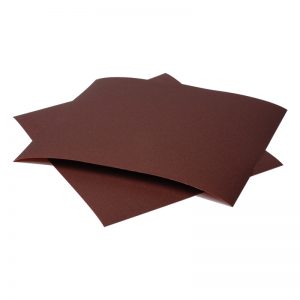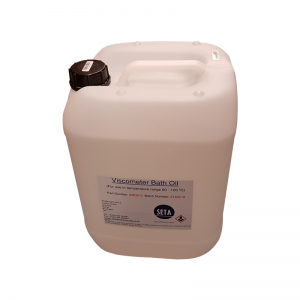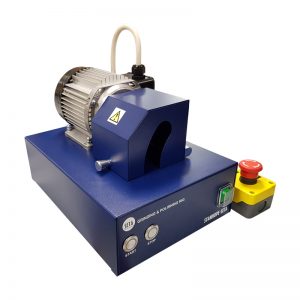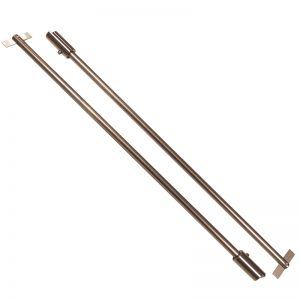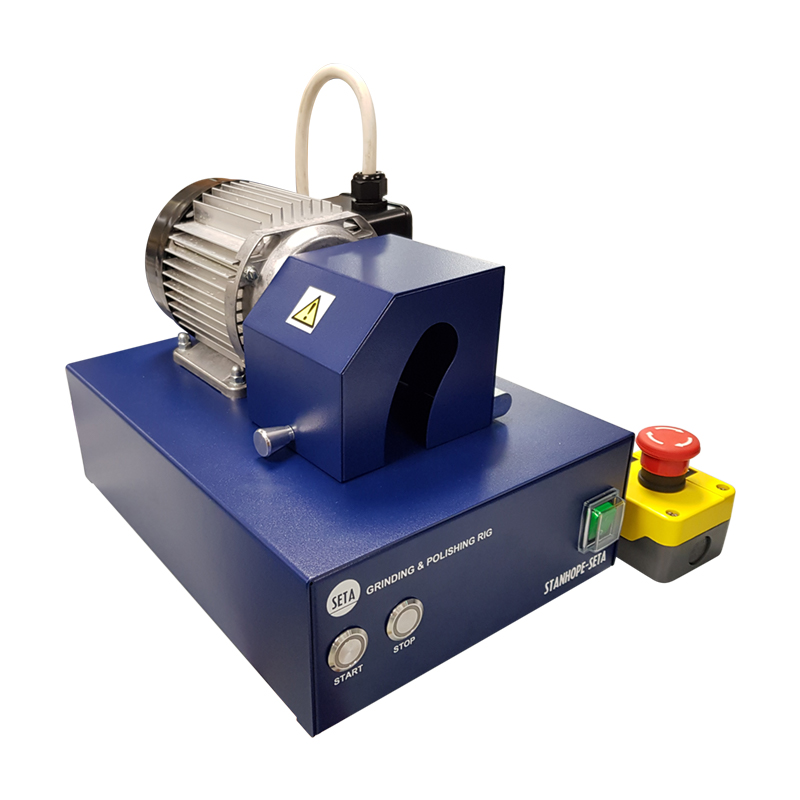Seta Rust Prevention Test Bath – 11200-8
The bath allows determination of the ability of steam turbine oils to prevent rusting of ferrous components and to test the corrosive properties of cargoes in petroleum product pipelines.
The 31 litre capacity oil bath has a temperature range of ambient +5 °C to 120 °C, and is controlled by a remote digital thermostir unit calibrated at 60 ° C ±0.1 °C. The top panel of the bath accepts up to seven test beakers. Each beaker is stirred at 1000 ±50 rpm by a quick release paddle stirrer.


Seta Rust Prevention Test Bath – 11200-8
Features
- Seven test stations
- Quick release stirrers
- Digital temperature controller
- Bath viewing window and door
- Integral drain valve
- Overflow drain valve
specifications
| TEMPERATURE RANGE | Ambient +5 °C to 120 °C ±0.1°C @ 60 °C |
|---|---|
| BATH CAPACITY | 31 litres |
| STIRRER SPEED | 1000 ±50 rpm |
| VOLTAGE | 100/130 V, 60 Hz 200/240 Volt, 50/ 60 Hz |
| POWER | 1.5 kW maximum |
| SIZE (HXWXD) | 600 x 850 x 380 mm |
| WEIGHT | 52 kg |
| CCCN CODE | Tariff 90318080 |
Manufacturers
show DATA — DO NOT CHANGE ID–
Industries
show DATA — DO NOT CHANGE ID–
Methods
show DATA — DO NOT CHANGE ID–
Spares and accessories for 11200-8
Aluminium Oxide Cloth 240 grit (Pack of 50) – 11250-0
For use with;
Seta Rust Prevention Test Bath (11200-8)
Grinding and Polishing Rig (11275-4)
Aluminium Oxide Cloth 150 grit (Pack of 50) – 11240-0
For use with;
Seta Rust Prevention Test Bath (11200-8)
Grinding and Polishing Rig (11275-4)
Bath Oil 80 – 120 °C (20 litres) – 94635-0
Seta bath fluids are formulated to maximise the heat stability and efficiency of Seta baths. The low viscosity reduces formation and aids in dissipation of bubbles.
Grinding and Polishing Rig – 11275-4
The rig is a compact bench-top instrument, used to prepare specimens in accordance with the test methods listed.
Bath Oil 40 – 85 °C (20 litres) – 94633-0
Berzelius Beaker 400 ml (Pack of 10) – 11200-005
400 ml beaker for use with the Seta Rust Prevention Test Bath (11200-7).
Test Specimen (Pack of 5) – 11220-001
A vertical test specimen manufactured from steel. Supplied with a ground finish, ready for final polishing.
Stirrer (Pack of 2) – 11200-503
For use with the Seta Rust Prevention Test Bath (11200-7).


